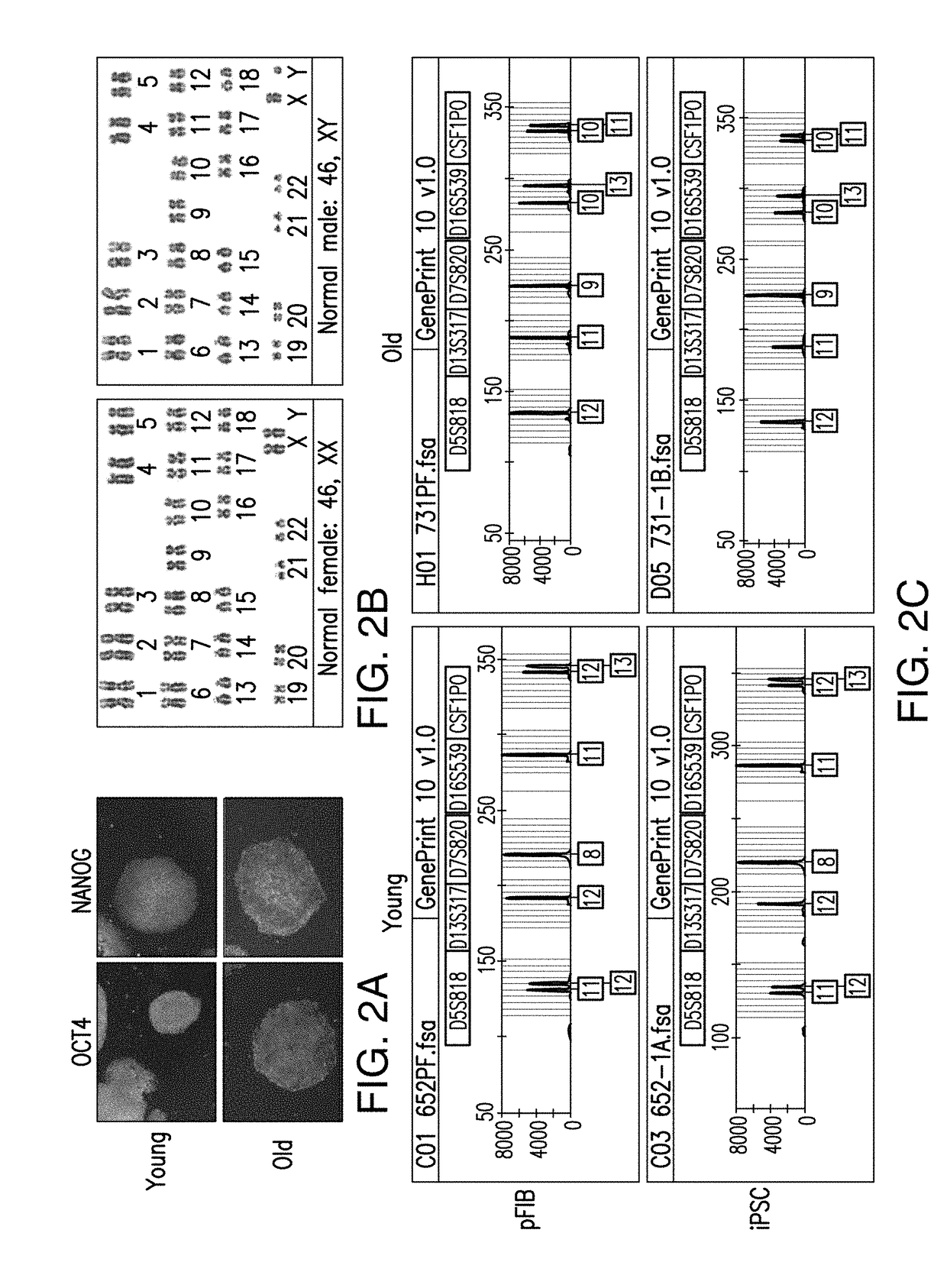Age-modified cells and methods for making age-modified cells
a technology of age-modified cells and cells, applied in cell culture active agents, non-embryonic pluripotent stem cells, instruments, etc., can solve the problems of increasing the burden on society of neurodegenerative disorders such as parkinson's disease (pd) or alzheimer's disease (ad), and the level of epigenetic repression of gene expression is increased, so as to achieve the effect of increasing the level of methylation and increasing the level of epigeneti
- Summary
- Abstract
- Description
- Claims
- Application Information
AI Technical Summary
Benefits of technology
Problems solved by technology
Method used
Image
Examples
example 1
Directed Differentiation of Neuronal Cell Types
[0265]This example describes one method of directed differentiation techniques to generate specific neural cell types. Nearly pure populations of CNS lineages, such as midbrain dopamine (mDA) neurons, are used in the methods described herein. The protocol of Kriks et al, Nature 2011, infra, can be used (among other methods).
[0266]Briefly, a modified version of the dual-SMAD inhibition protocol can be used to direct cells towards floor plate-based mDA neurons as described previously (Kriks et al., Nature 480:547-551 (2011). iPSC-derived mDA neurons can be replated on day 30 of differentiation at 260,000 cells per cm2 on dishes pre-coated with polyornithine (PO; 15 μg / ml) / Laminin (1 μg / ml) / Fibronectin (2 μg / ml) in Neurobasal / B27 / L-glutamine-containing medium (NB / B27; Life Technologies) supplemented with 10 μM Y-27632 (until day 32) and with BDNF (brain-derived neurotrophic factor, 20 ng / ml; R&D), ascorbic acid (AA; 0.2 mM, Sigma), GDNF (g...
example 2
Profiling of mRNA, 5hMC and DNA Methylation
[0267]This example describes one technology to profile mRNA, 5hMC and DNA methylation in the presently described age paradigm. These methods provide data regarding the molecular control of age-related factors.
[0268]5-mC Detection
[0269]An enhanced reduced-representation bisulfite sequencing (ERRBS) method may be used. In this protocol, genomic DNA is digested by Msp1 restriction enzyme and fragments are size selected to obtain fragments enriched for CpG sites. These fragments undergo bisulfite conversion, sequenced on Illumina HiSeq200035 and the sequencing data are analyzed by custom software that maps bisulfite-treated sequencing reads and outputs to the methylation status of identified CpG sites.
[0270]5-hmC Detection
[0271]A Hydroxymethyl Collector™ kit from Active Motif may be used. This protocol is based on the selective addition of a biotin moiety to 5-hmC positions followed by an immunoprecipitation (IP) step. Similar to ChIP-seq exper...
example 3
Gene Corrected PD-iPSC Lines
[0274]This example describes the use of a gene corrected PD-iPSC line (e.g., TALEN-based gene targeting). Although it is not necessary to understand the mechanism of a disclosure, it is believed that these cell lines provide access to iso-genic pairs of PD-iPSC and control iPSC to more precisely distinguish between disease factors related to age and factors related to genetic susceptibility to PD.
PUM
| Property | Measurement | Unit |
|---|---|---|
| Fraction | aaaaa | aaaaa |
| Fraction | aaaaa | aaaaa |
| Fraction | aaaaa | aaaaa |
Abstract
Description
Claims
Application Information
 Login to View More
Login to View More - R&D
- Intellectual Property
- Life Sciences
- Materials
- Tech Scout
- Unparalleled Data Quality
- Higher Quality Content
- 60% Fewer Hallucinations
Browse by: Latest US Patents, China's latest patents, Technical Efficacy Thesaurus, Application Domain, Technology Topic, Popular Technical Reports.
© 2025 PatSnap. All rights reserved.Legal|Privacy policy|Modern Slavery Act Transparency Statement|Sitemap|About US| Contact US: help@patsnap.com



